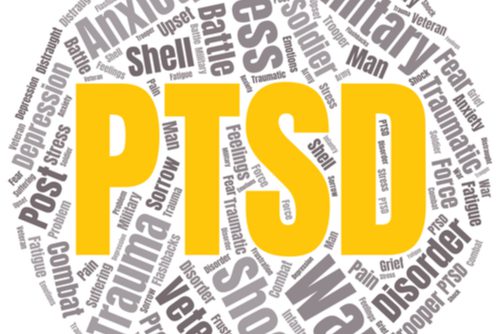
Post-Traumatic Stress Disorder (PTSD)
A traumatic situation can be experienced either through a frightening or dangerous event. Such events can include a weather phenomenon such as a hurricane or tornado, military combat, serious accidents, or violent assaults. A trauma experienced for long periods of time can also be considered a frightening or dangerous event. Losing a loved one can also be considered a traumatic event.
In each person there is a mechanism known as the fight-or-flight response or acute stress response. It was designed to keep us free from harm by either fighting the danger or fleeing from the danger. When a person experiences a frightening or dangerous event, the physical body will respond with this fight-or-flight physiological response. Adrenaline and norepinephrine are produced, as well as acetylcholine and catecholamine. These chemicals help to prepare the body for fight-or-flight by increasing heart rate, constricting blood vessels, and preparing large extremities (legs and arms) for use.
Following a traumatic event, many people experience the fight-or-flight response and can recover once the event has ended. For others, the physiological and psychological effects of the traumatic event might last longer and lead to PTSD.
PTSD symptoms usually begin to surface approximately three months following the traumatic event; however, symptoms can surface within one month for some. Symptoms can include flashbacks, frightening thoughts, bad dreams, mood issues, avoidance behavior, heightened startle response, and difficulty concentrating or keeping focused. These symptoms can be short-lived and an individual can recover within six months. In others, PTSD might become chronic.
A diagnosis for PTSD should come from a mental health professional, physician, or psychiatrist familiar with PTSD. The most common treatments for PTSD is medication and psychotherapy, which can be completed together or separately. Some individuals with PTSD may find other forms of treatment that work best for them. Medications for the treatment of PTSD include antidepressants and antianxiety medications. Some physicians may prescribe medications that can help with sleep problems and nightmares.
Psychotherapy for the treatment of PTSD involves different techniques; however, cognitive-behavioral therapy has been shown to have a positive effect. Cognitive-behavioral therapy can include exposure therapy and cognitive restructuring. With exposure therapy, the individual and therapist work together to slowly expose the individual to the traumatic event. During the exposure, the therapist can provide a safe environment in which the individual can process the negative emotions associated with the trauma through visualization or writing. Cognitive restructuring helps individuals to make sense of the bad memories associated with the traumatic event. The therapist would focus on what happened in a realistic way.







